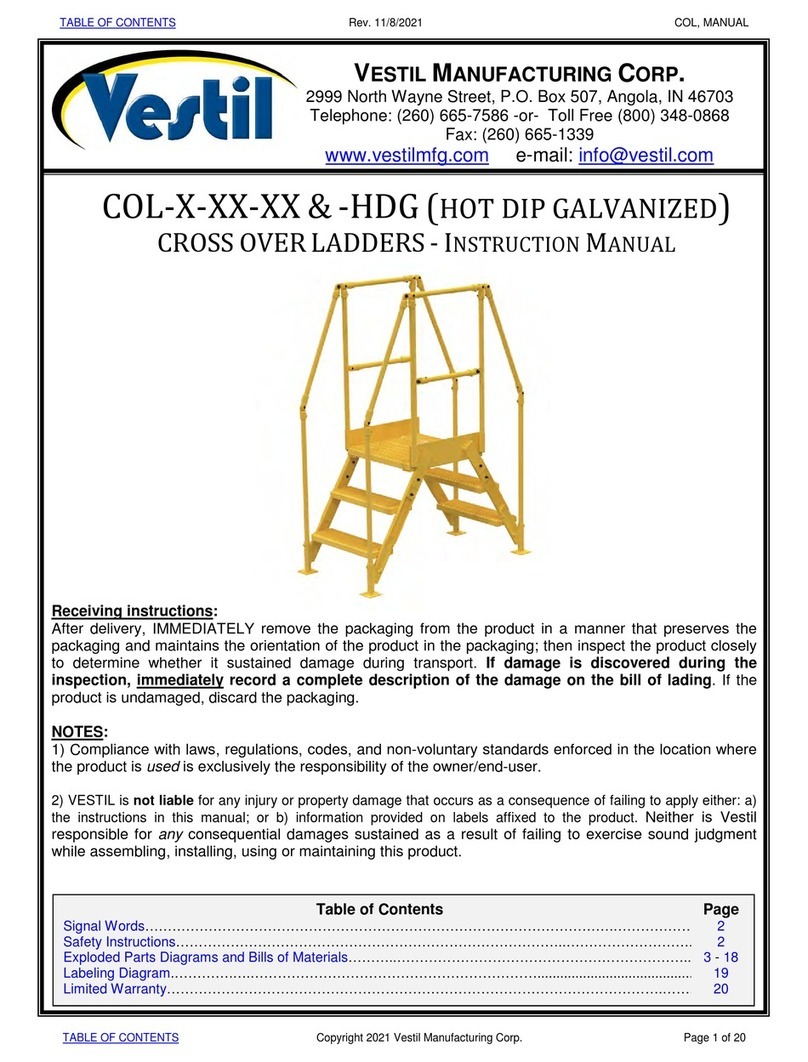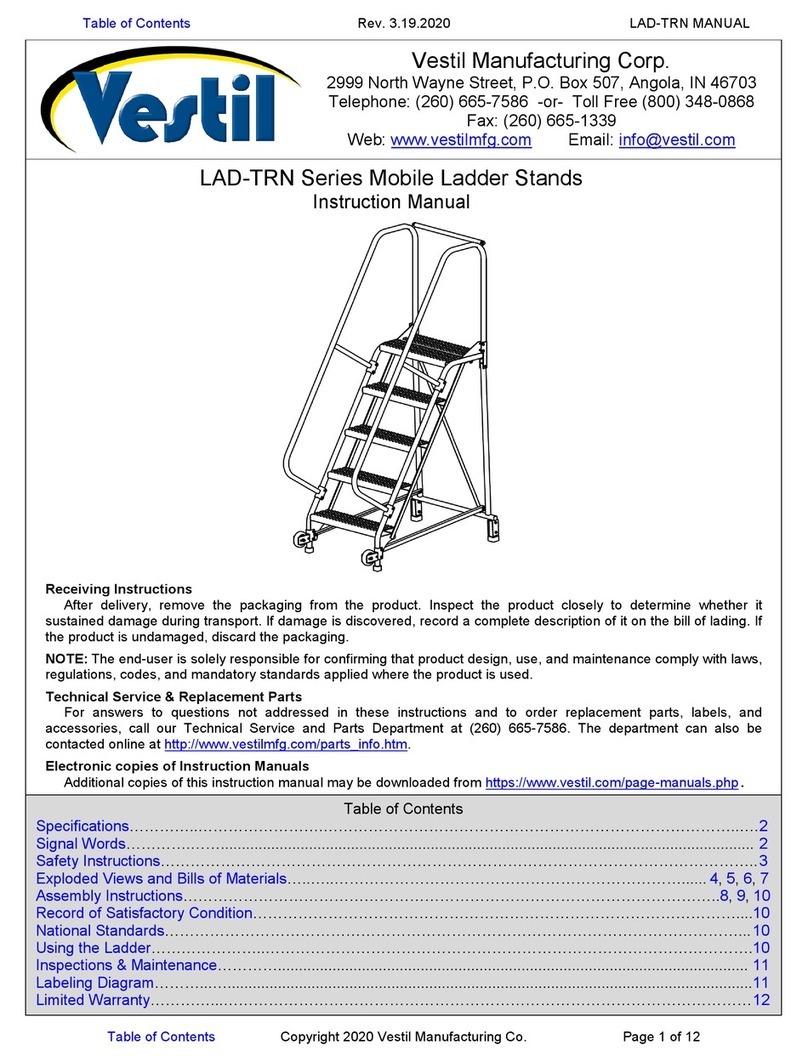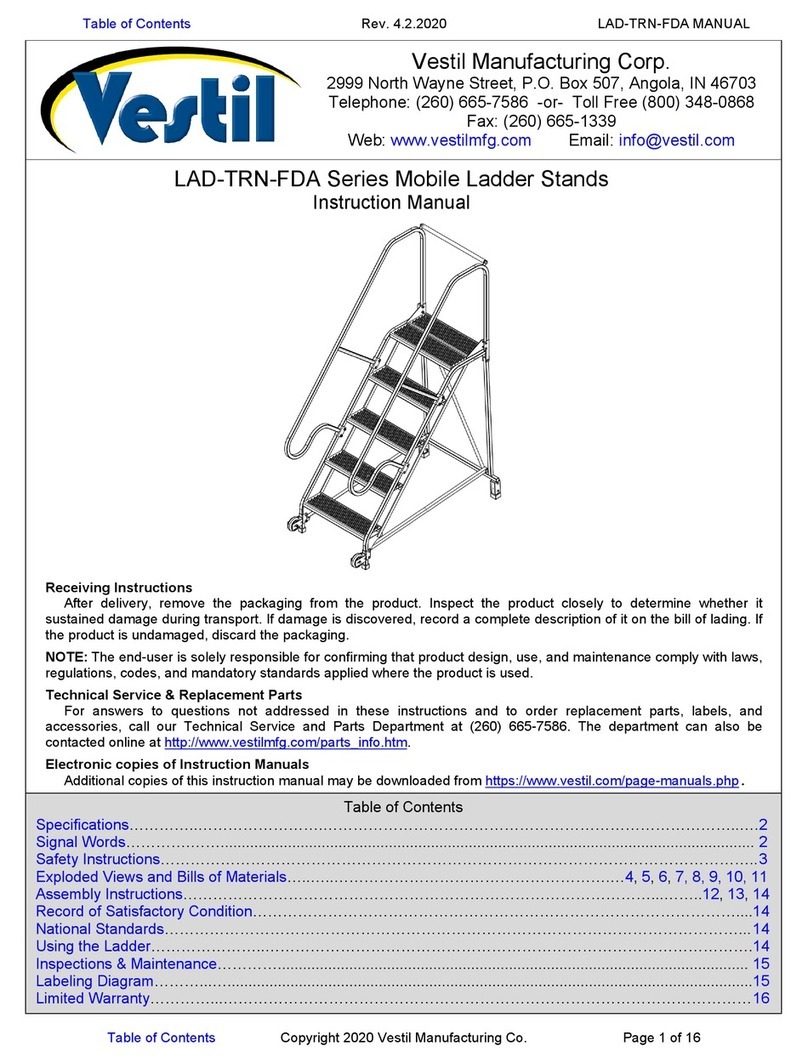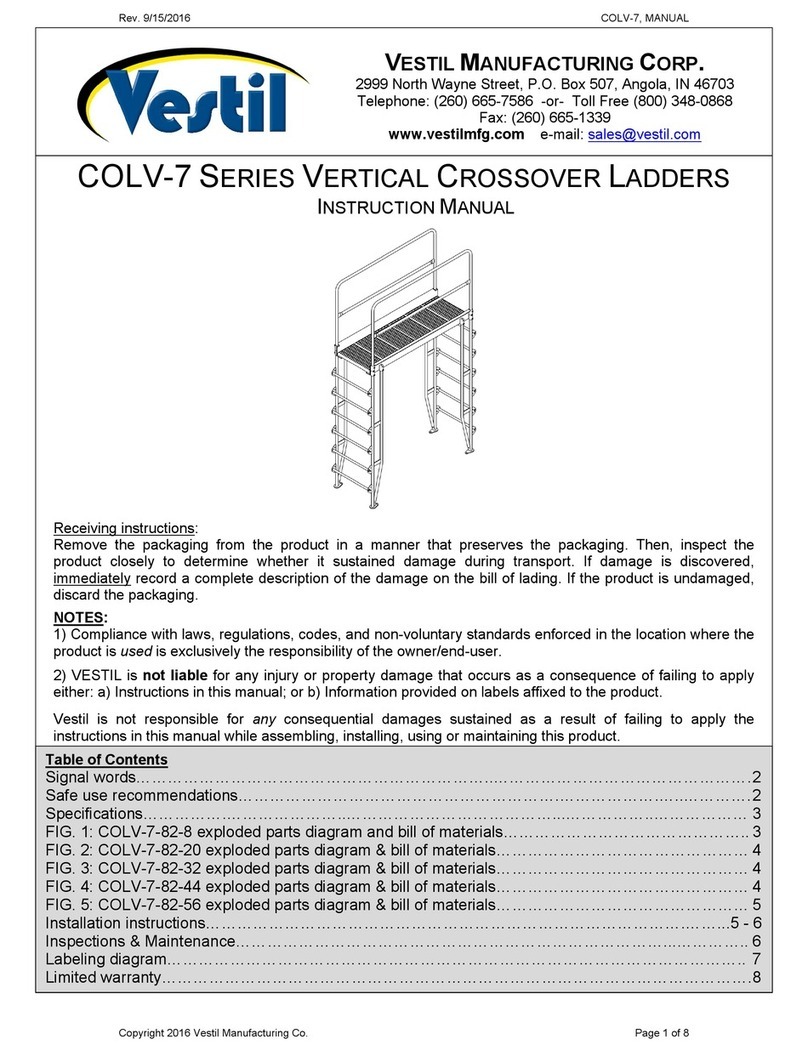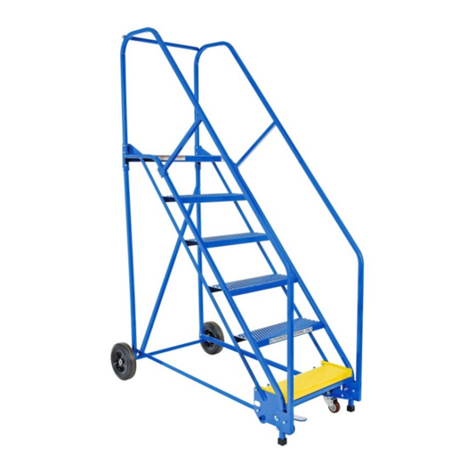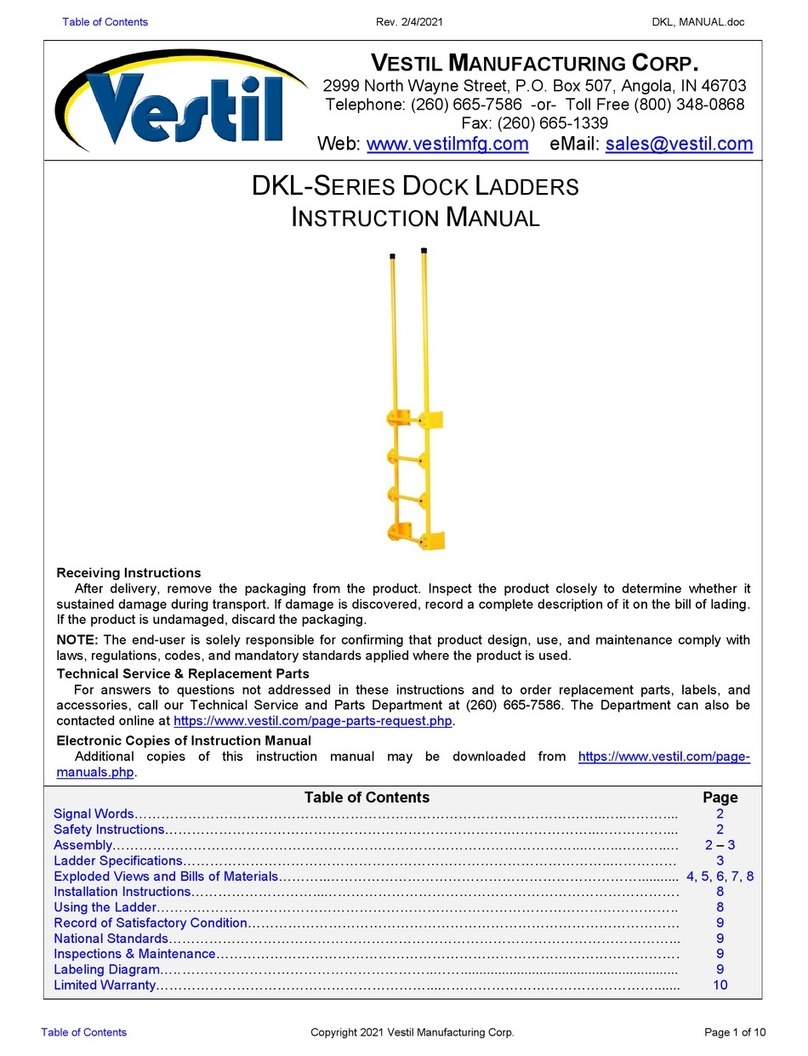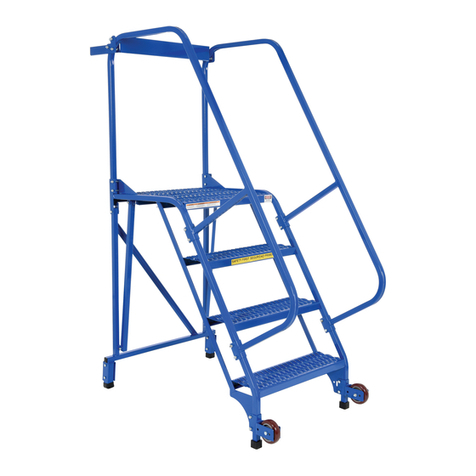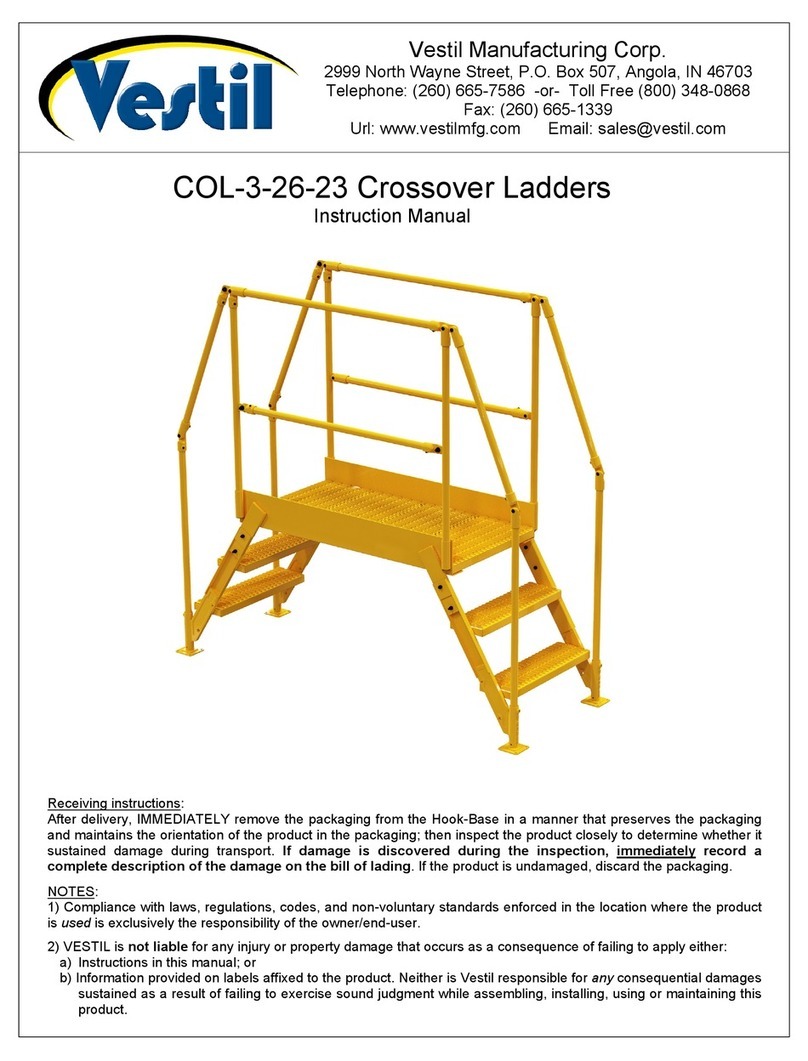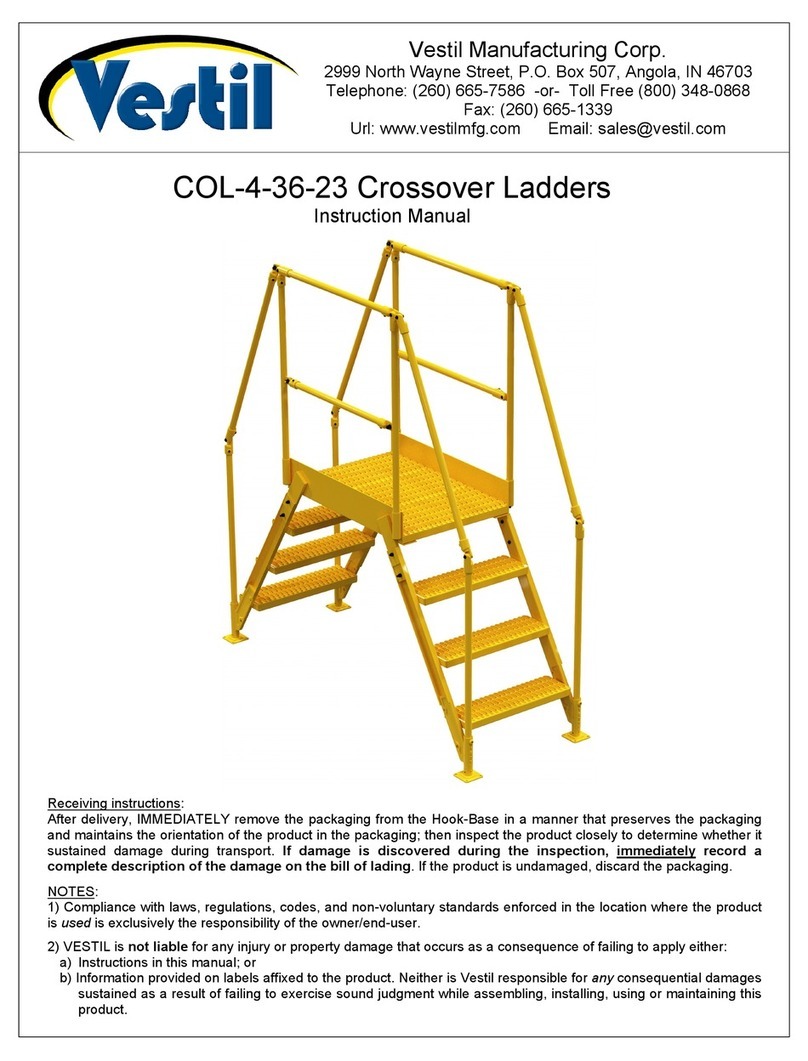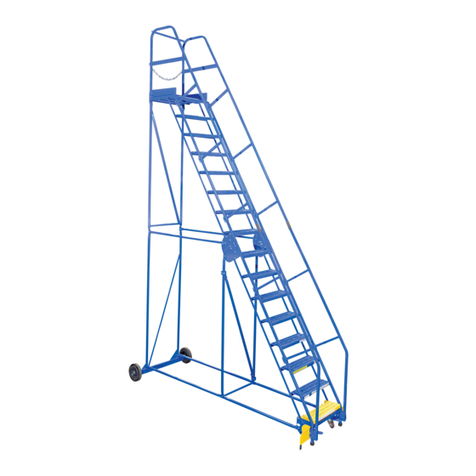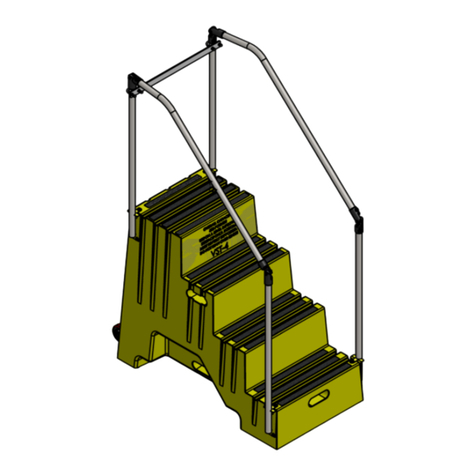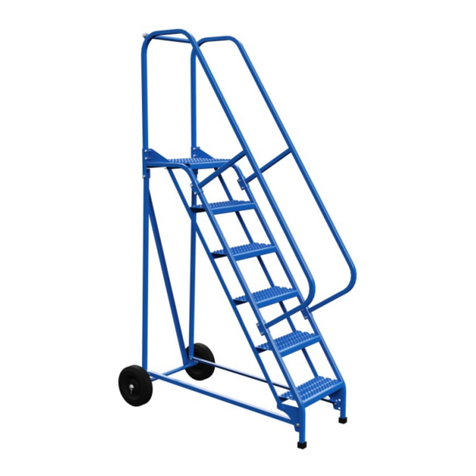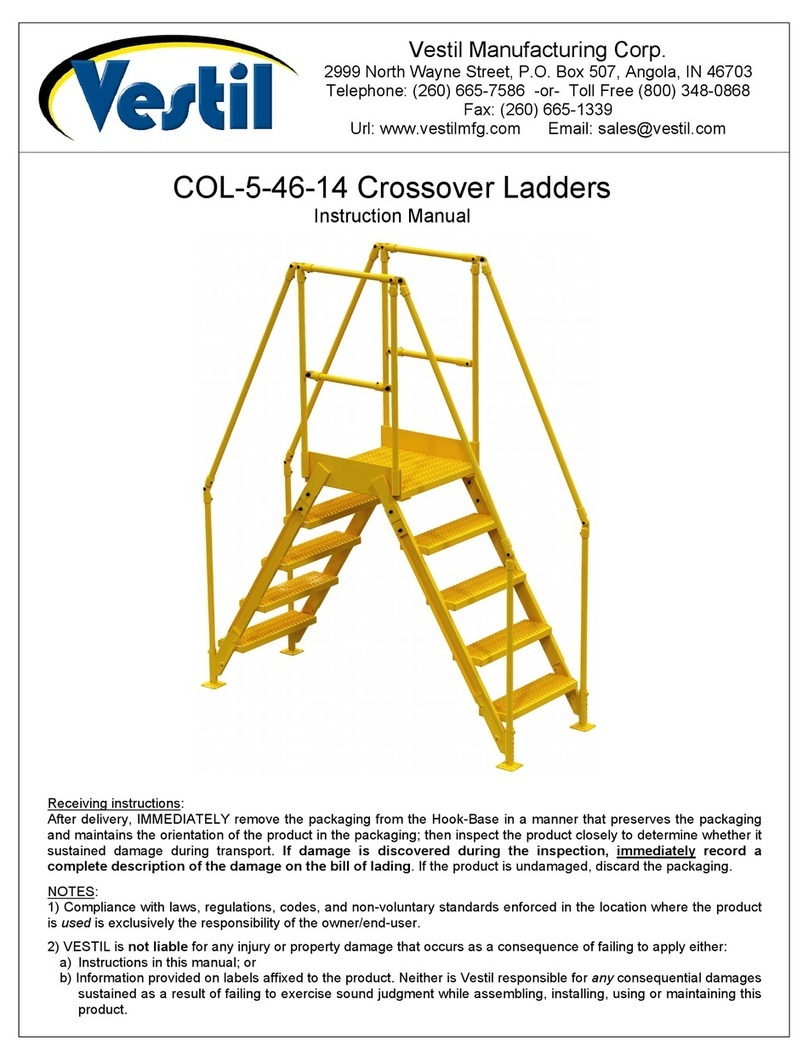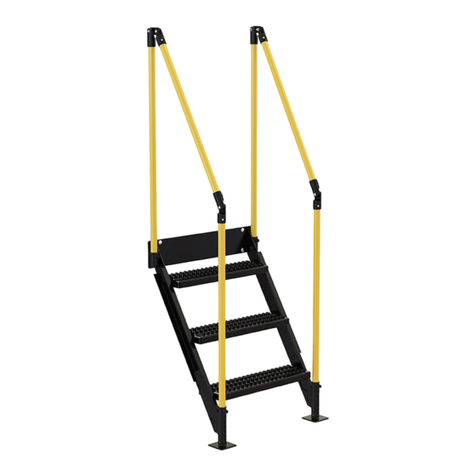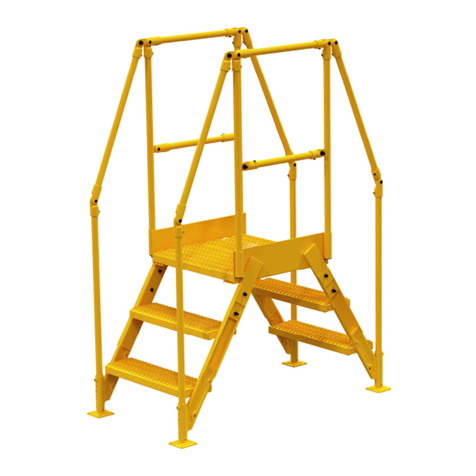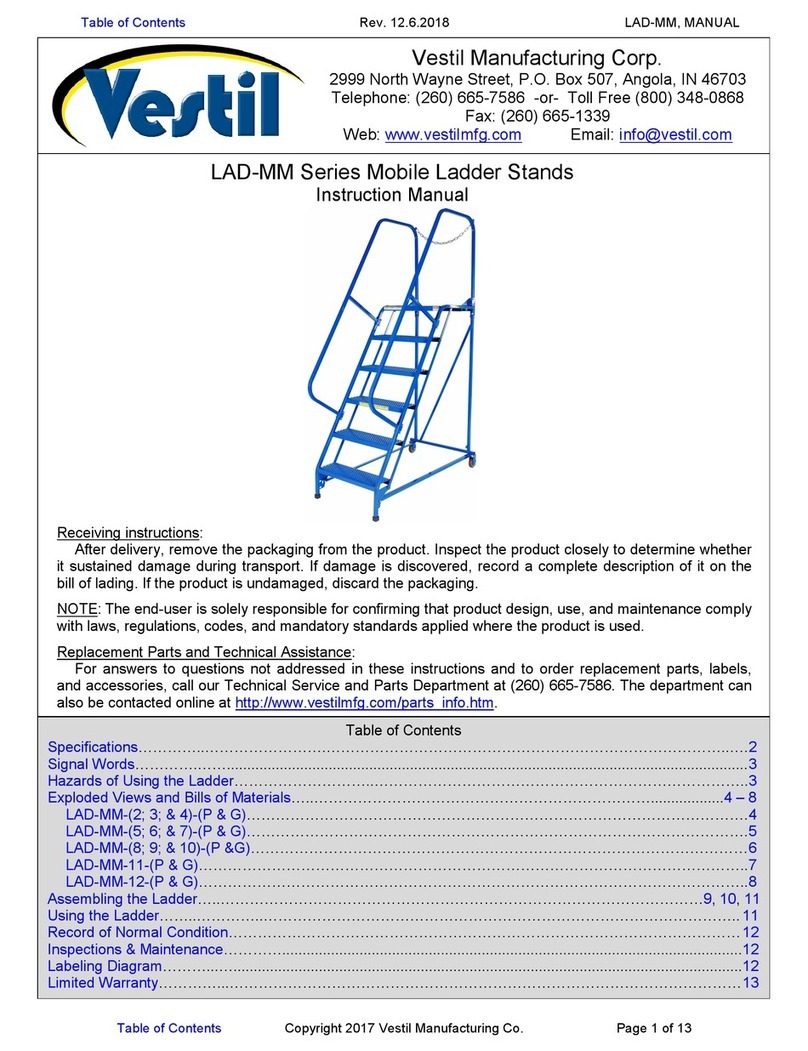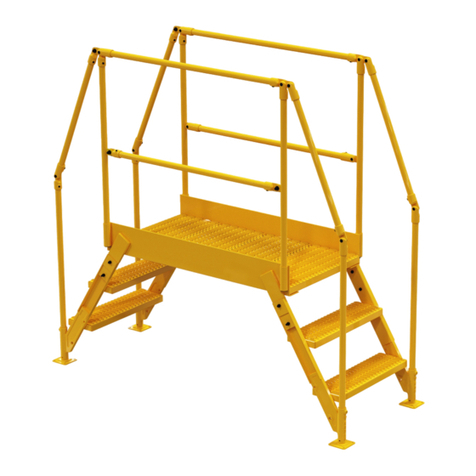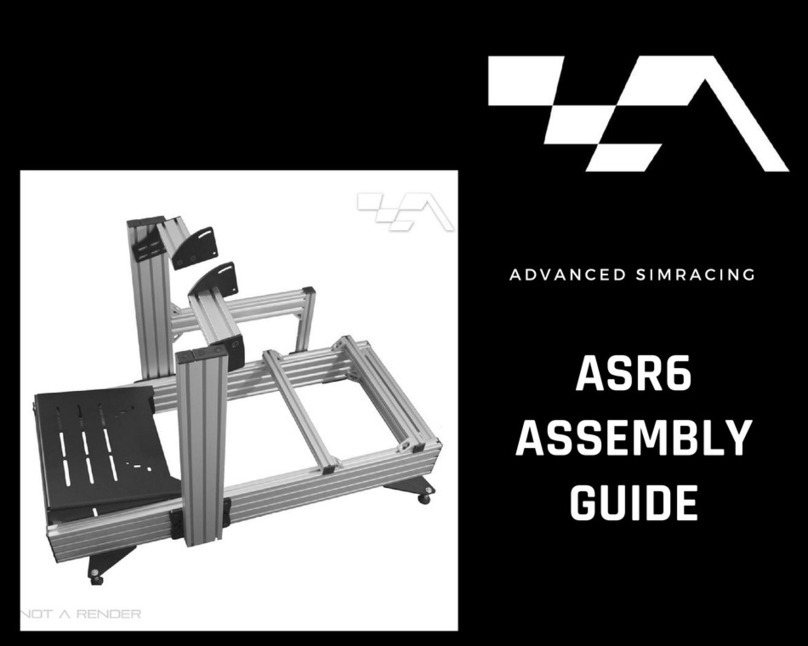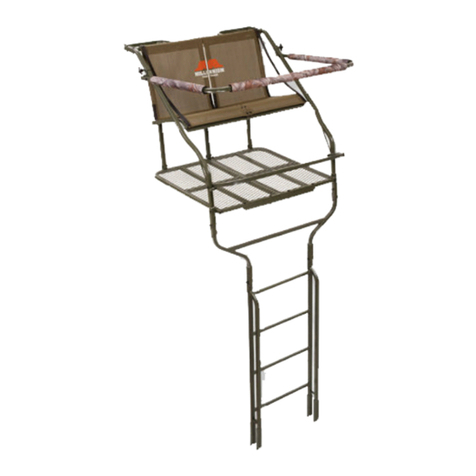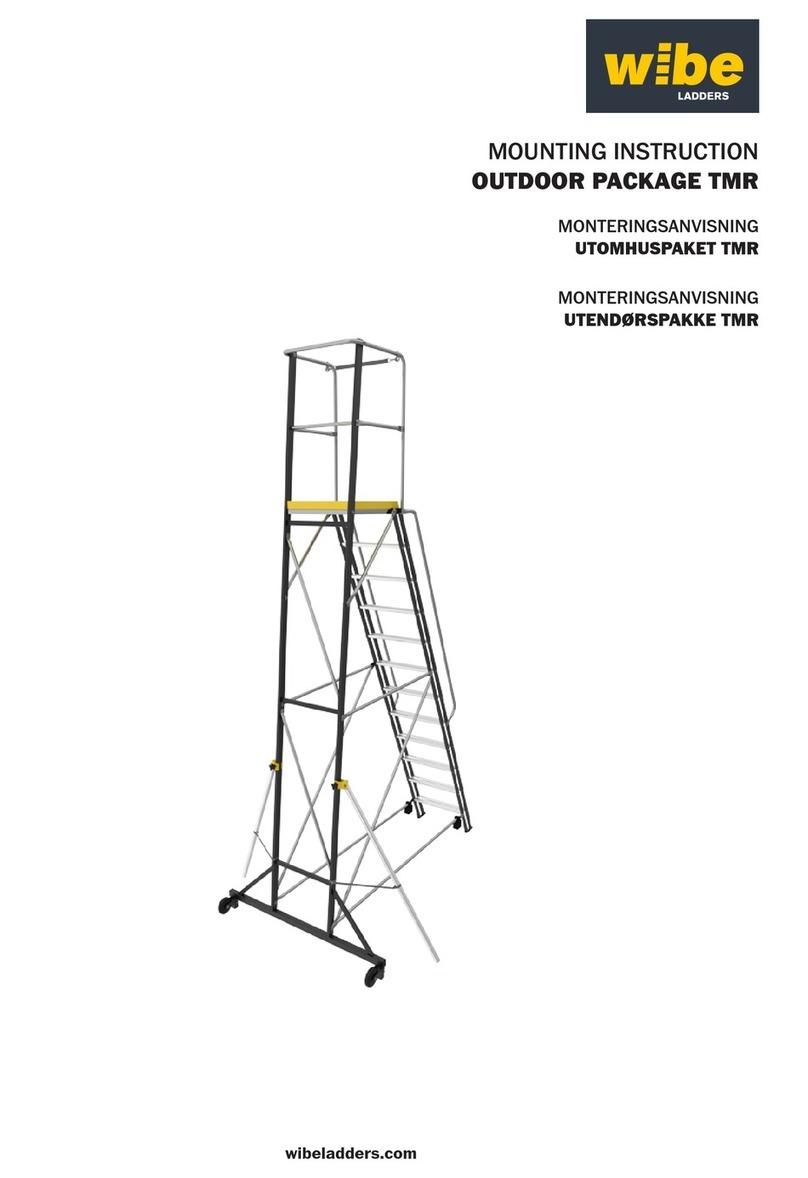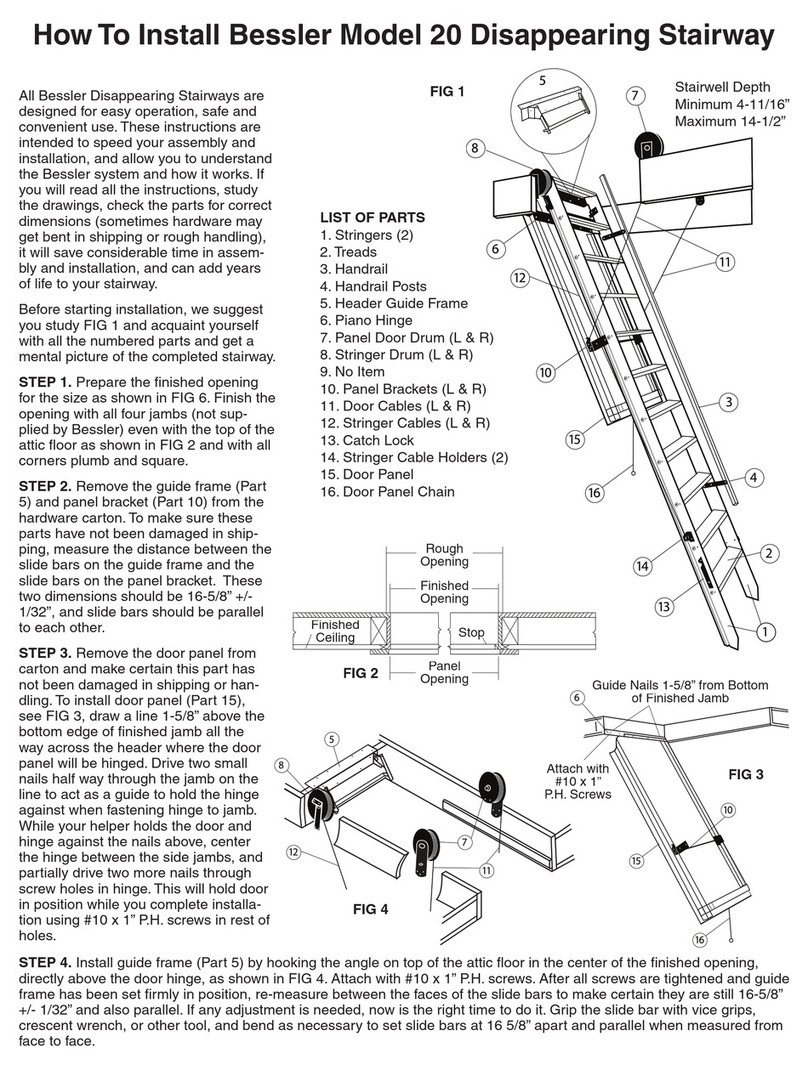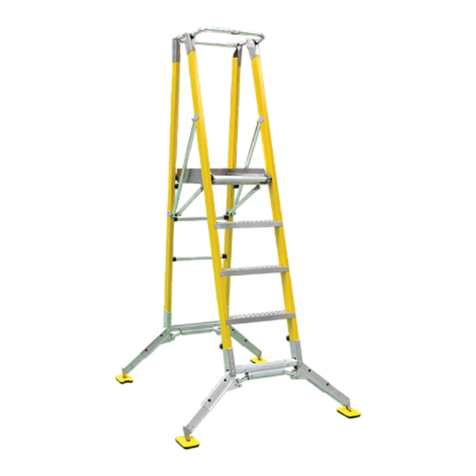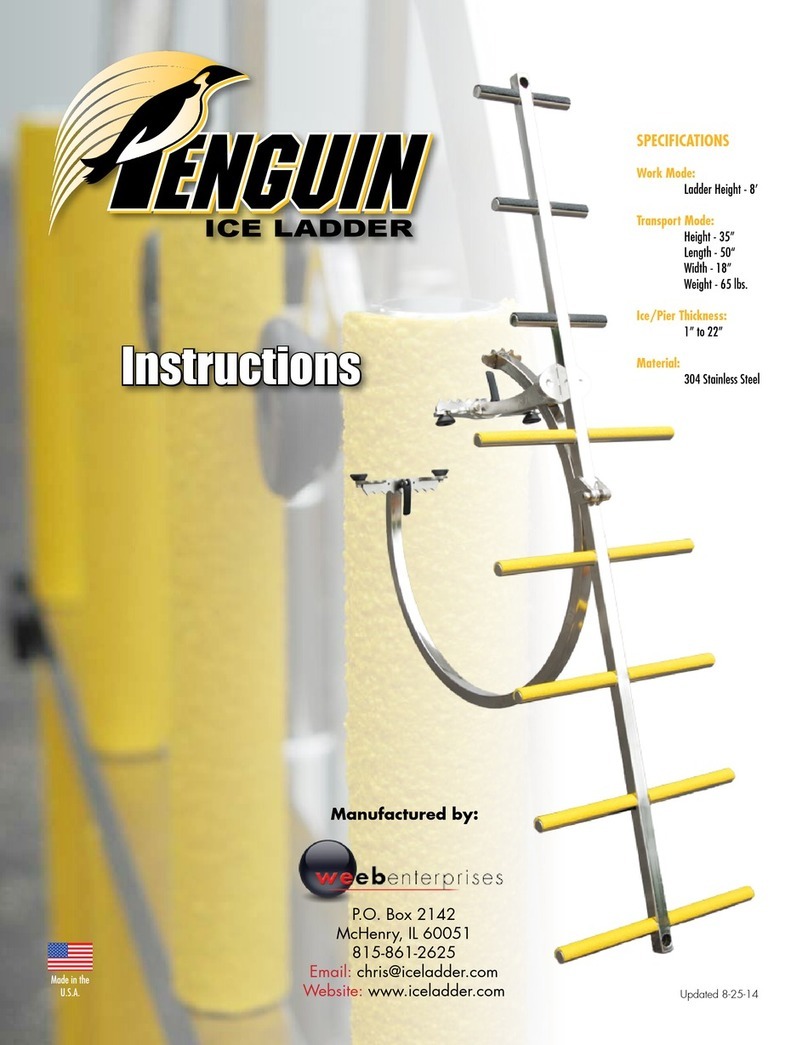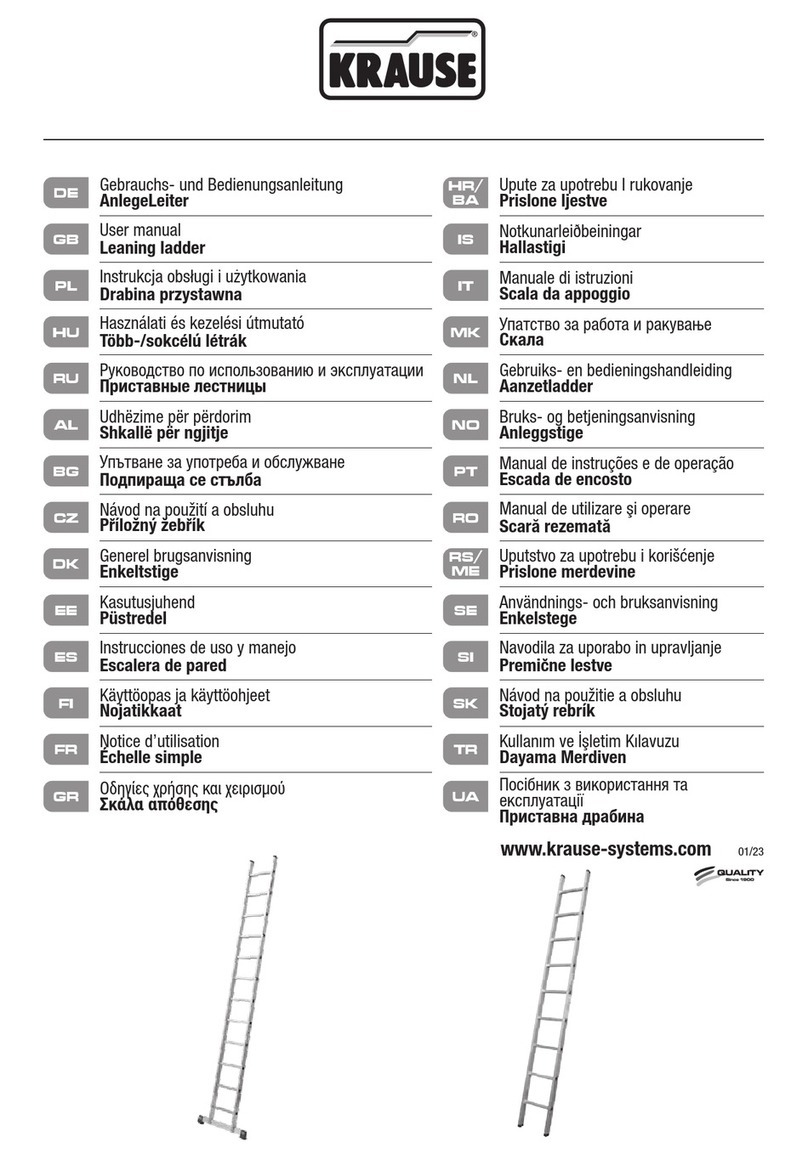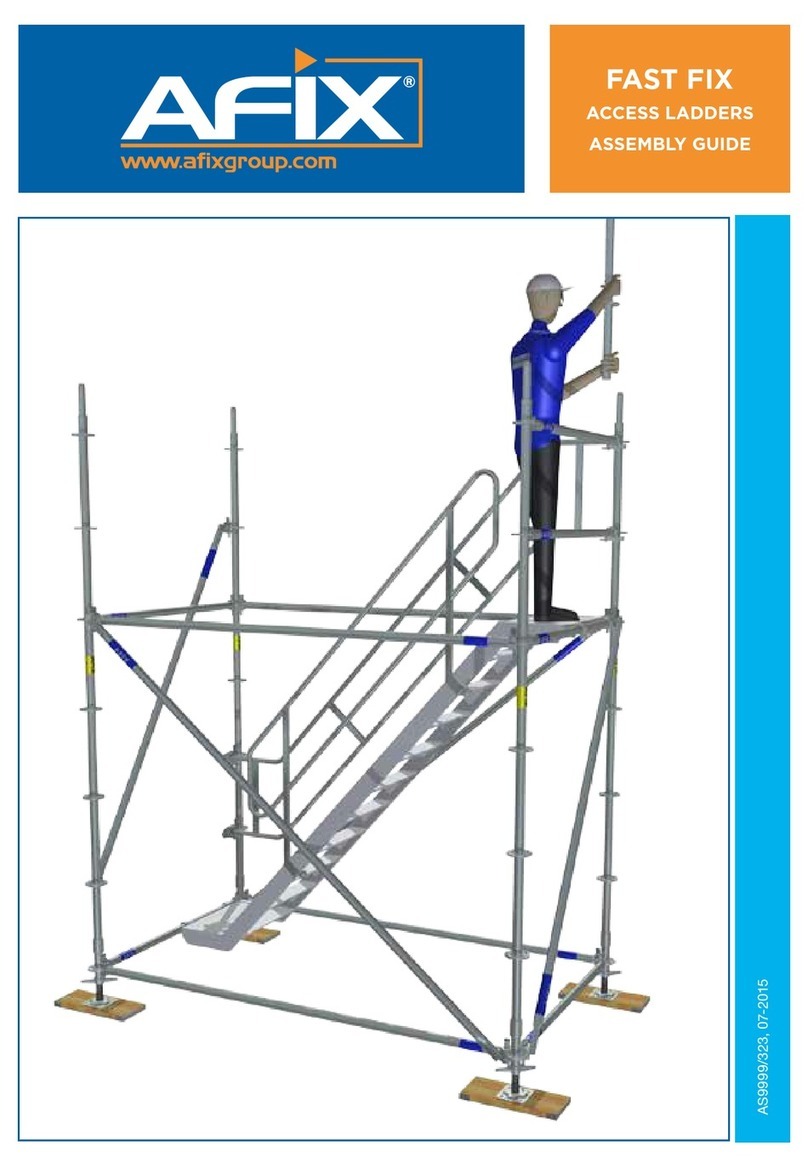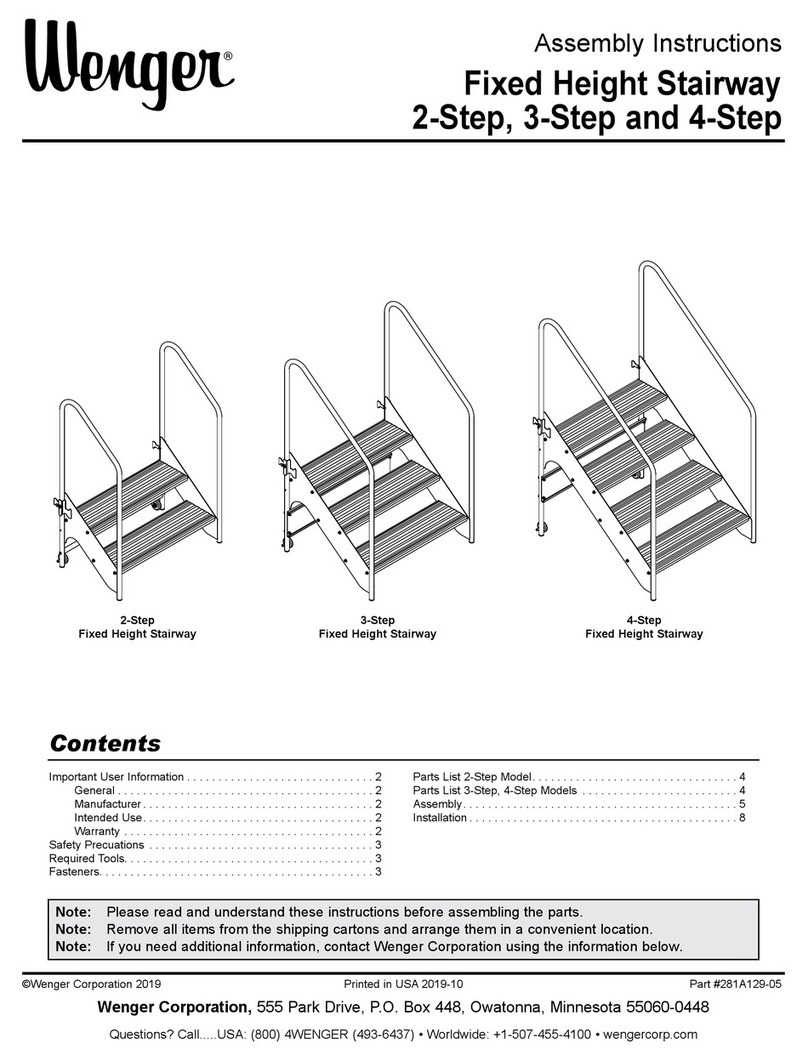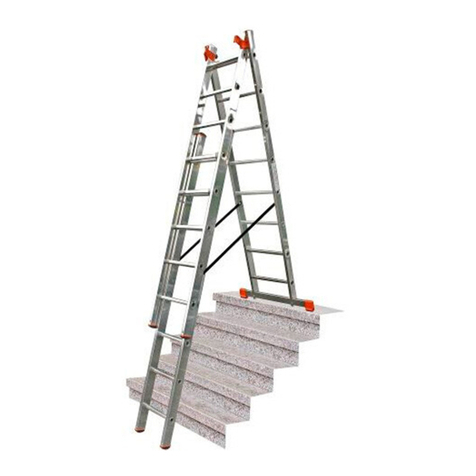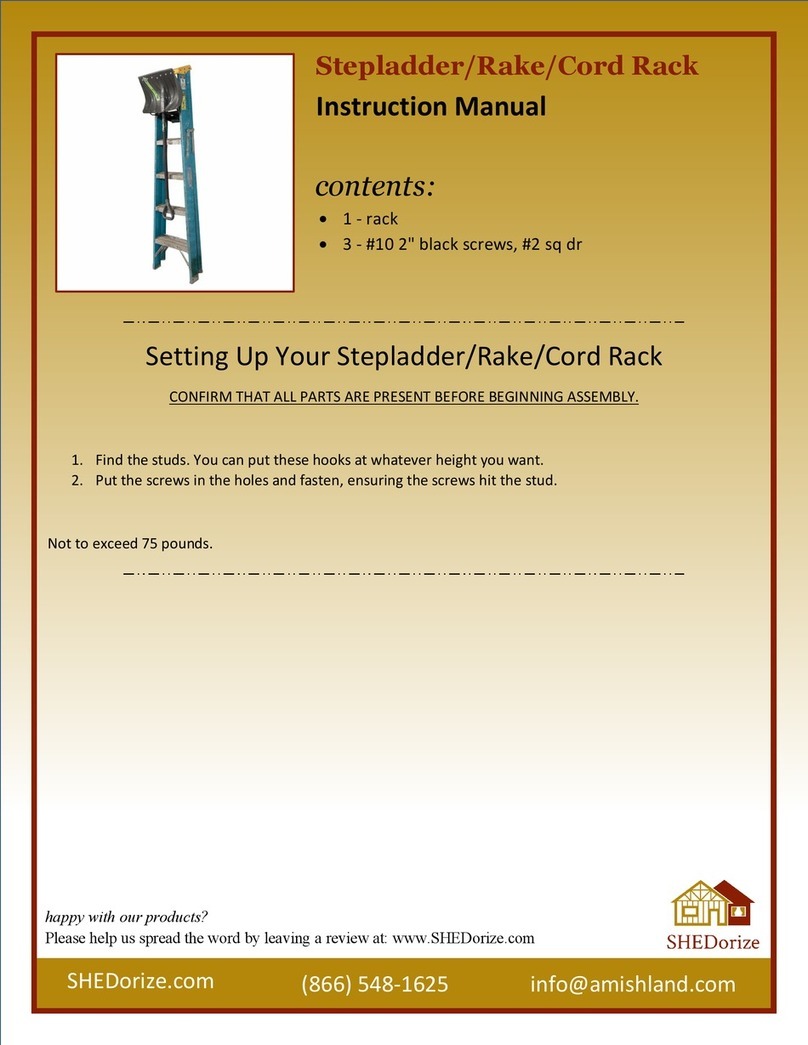
TABLE OF CONTENTS Rev. 9/30/2021 LAD-FM-PSO, MANUAL
TABLE OF CONTENTS Copyright 2021 Vestil Manufacturing Co. Page 2 of 21
SIGNAL WORDS
SIGNAL WORDS appear in this manual to draw the reader’s attention to important safety-related
messages. The following are signal words used in this manual and their definitions.
SAFETY INSTRUCTIONS
Vestil strives to identify foreseeable hazards associated with the use of its products. However, no
manual can address every conceivable risk that could arise from using a ladder. Always apply good
judgment while using this mezzanine ladder system.
WARNING
If this product is installed, used, or maintained improperly serious personal injuries or death might result.
•Read and understand the entire manual before installing, using, or servicing the product.Keep this
manual in a location known to persons who use the dock leveler. Read the manual whenever
necessary to refresh your understanding of proper use, inspection, and maintenance procedures.
•DO NOT exceed the capacity: 350 pounds (159kg). The total weight applied to the ladder (weight of
the user plus tools, etc.) must not be greater than the capacity. Capacity is provided on your
SPECIFICATIONS document as well as on label 1153. See LABELING DIAGRAM on p. 20.
•DO NOT use the stairway if any unusual noise or movement is observed while weight is applied to it. If
a malfunction occurs, remove the unit from service and notify your supervisor or maintenance personnel
about the issue. DO NOT return the ladder to service until qualified maintenance personnel determine
that it is in SATISFACTORY CONDITION. See RECORD OF SATISFACTORY CONDITION on p 19.
•DO NOT use the stairway UNLESS it is securely fastened to the mezzanine.
•DO NOT store articles on the stairs.
•DO NOT use this ladder unless you are in good health. NEVER use the ladder while under the influence
of alcohol or drugs, including prescription medication that affects balance, perception, or judgment.
•Wear appropriate footwear. DO NOT wear high-heeled shoes or footwear with smooth soles.
•DO NOT contact overhead objects with either your body or with the ladder during use.
•Avoid electrical shock! Avoid contact, or possible contact, with energized electrical lines while
installing, assembling, using, maintaining, or storing the ladder.
•Remove foreign matter, e.g. mud, from your shoes before walking on the ladder. Only wear slip-
resistant shoes.
•Only stand on the steps. DO NOT climb onto the railing. DO NOT slide on the railing.
•DO NOT access, or egress from, any step from an elevated location other than the mezzanine to
which the ladder is attached.
•ALWAYS face the stairs and use the handrails while ascending and descending the ladder.
•DO NOT increase the height of any step by standing on other objects placed on the ladder.
•Inspect the ladder as described in INSPECTIONS & MAINTENANCE on p. 19-20. DO NOT use the ladder
unless it is in SATISFACTORY CONDITION. ONLY use manufacturer-approved replacement parts to repair
the ladder.
•ONLY use the ladder to access the mezzanine to which the ladder is attached. DO NOT use the
ladder for any other purpose. DO NOT store materials and/or equipment on the steps.
•DO NOT lean, or reach, over the handrails or guardrails of the ladder. Overreaching could cause
instability and result in a fall. Avoid sudden shifts while on the ladder. DO NOT push, pull, or lean on the
handrails or guardrails.
•DO NOT skip steps. Climb the ladder one step at a time.
•DO NOT attempt to extend or retract the ladder while someone is using it. The ladder must be
unoccupied before it is moved.
Identifies a hazardous situation which, if not avoided, WILL result in DEATH or
SERIOUS INJURY. Use of this signal word is limited to the most extreme situations.
Identifies a hazardous situation which, if not avoided, COULD result in DEATH or
SERIOUS INJURY.
Indicates a hazardous situation which, if not avoided, COULD result in MINOR or
MODERATE injury.
Identifies practices likely to result in product/property damage, such as
operation that might damage the product.

